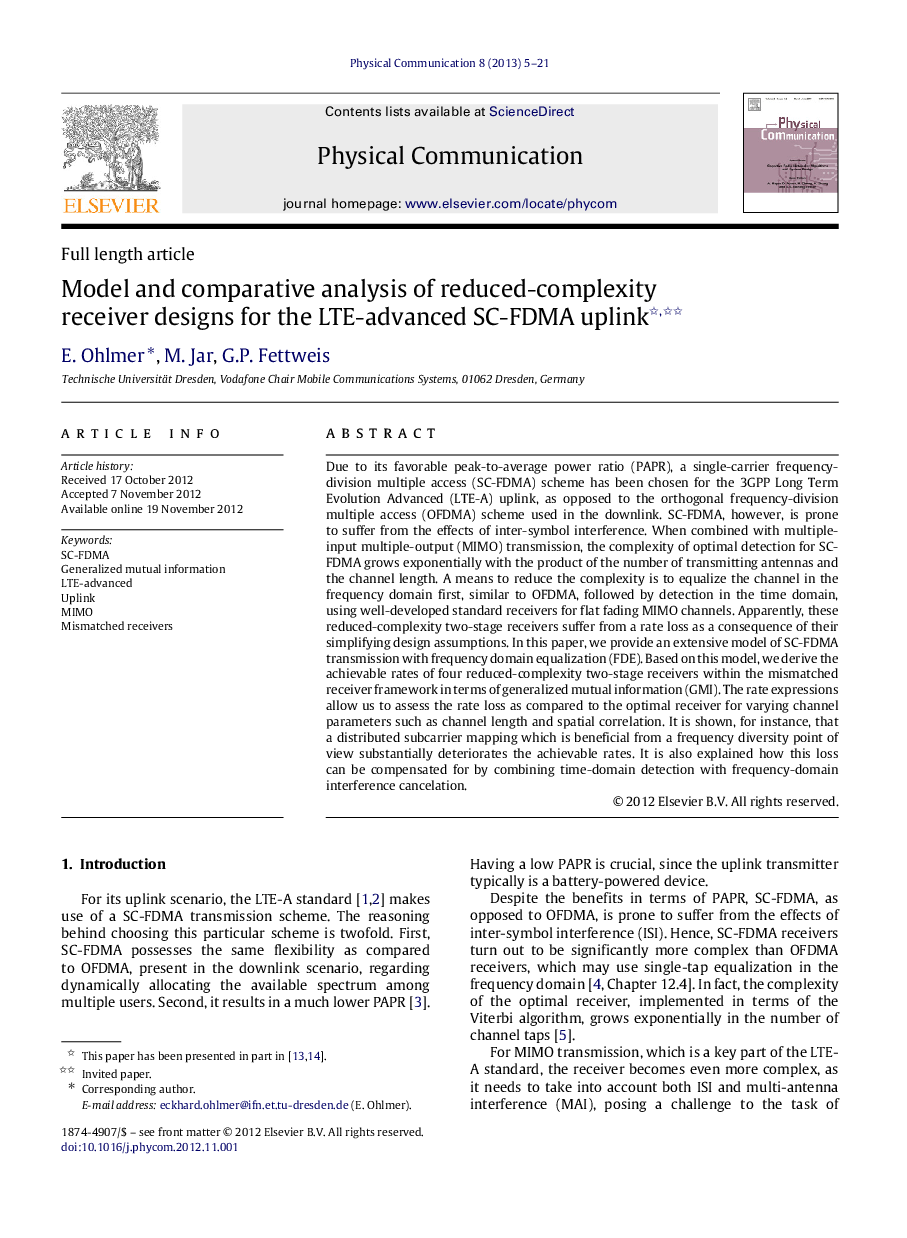| Article ID | Journal | Published Year | Pages | File Type |
|---|---|---|---|---|
| 466332 | Physical Communication | 2013 | 17 Pages |
Due to its favorable peak-to-average power ratio (PAPR), a single-carrier frequency-division multiple access (SC-FDMA) scheme has been chosen for the 3GPP Long Term Evolution Advanced (LTE-A) uplink, as opposed to the orthogonal frequency-division multiple access (OFDMA) scheme used in the downlink. SC-FDMA, however, is prone to suffer from the effects of inter-symbol interference. When combined with multiple-input multiple-output (MIMO) transmission, the complexity of optimal detection for SC-FDMA grows exponentially with the product of the number of transmitting antennas and the channel length. A means to reduce the complexity is to equalize the channel in the frequency domain first, similar to OFDMA, followed by detection in the time domain, using well-developed standard receivers for flat fading MIMO channels. Apparently, these reduced-complexity two-stage receivers suffer from a rate loss as a consequence of their simplifying design assumptions. In this paper, we provide an extensive model of SC-FDMA transmission with frequency domain equalization (FDE). Based on this model, we derive the achievable rates of four reduced-complexity two-stage receivers within the mismatched receiver framework in terms of generalized mutual information (GMI). The rate expressions allow us to assess the rate loss as compared to the optimal receiver for varying channel parameters such as channel length and spatial correlation. It is shown, for instance, that a distributed subcarrier mapping which is beneficial from a frequency diversity point of view substantially deteriorates the achievable rates. It is also explained how this loss can be compensated for by combining time-domain detection with frequency-domain interference cancelation.
